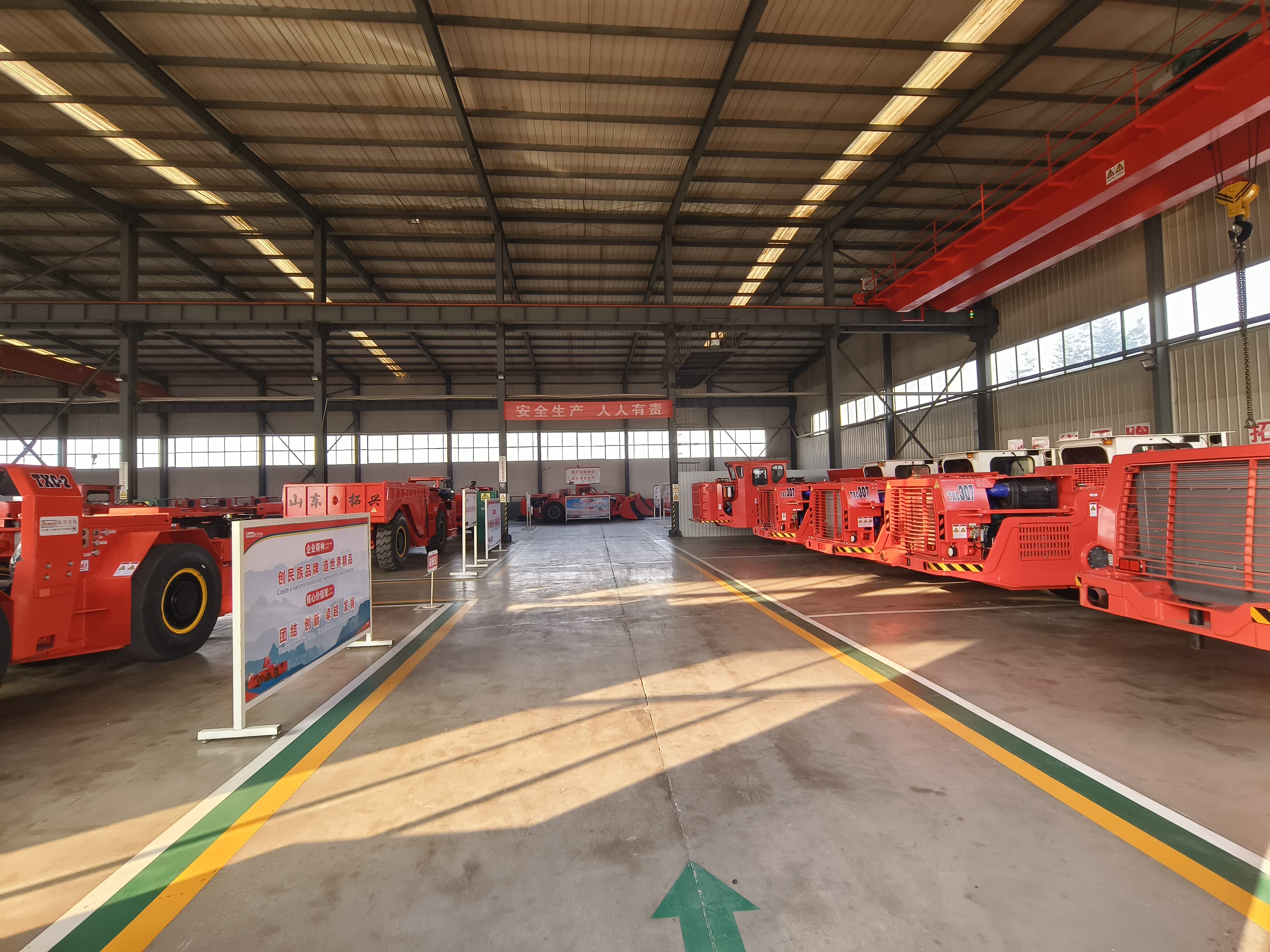The Importance of Safety in Underground Mining Operations
Underground Mining Machines are indispensable tools that allow companies to extract valuable minerals and resources from deep beneath the earth’s surface. However, the underground environment is filled with risks, including limited visibility, toxic gases, unstable rock formations, and confined spaces. Without strict adherence to safety protocols, both workers and equipment are exposed to significant dangers.
The integration of advanced technologies into Underground Mining Machines has helped reduce many of these risks. From collision-avoidance sensors to automated ventilation systems, safety is increasingly becoming an integral part of machine design. Yet technology alone is not enough—successful mining operations rely on a culture of safety, proper operator training, and continuous monitoring of both machines and the surrounding environment.
Understanding how to maximize the safe use of Underground Mining Machines is essential not only for protecting workers but also for maintaining productivity and ensuring sustainable operations. By examining key safety strategies, we can see how modern practices minimize risks while keeping efficiency at its peak.
Operator Training and Safety Awareness
Comprehensive Training Programs
The foundation of safe operations lies in comprehensive training for all personnel who interact with Underground Mining Machines. Training should cover proper machine operation, hazard identification, and emergency response. Practical, hands-on sessions reinforce theoretical knowledge and prepare operators for real-world challenges underground.
Continuous Skill Development
As technologies evolve, operators must stay up to date with the latest advancements in Underground Mining Machines. Regular refresher courses, safety drills, and simulation-based training ensure that workers remain competent and capable of handling unexpected scenarios. Investing in skill development also creates a stronger safety culture across the entire mining team.

Machine Design and Safety Features
Built-In Protective Systems
Modern Underground Mining Machines are equipped with built-in protective features such as rollover protection structures, reinforced cabins, and advanced braking systems. These features safeguard operators in the event of sudden accidents while minimizing downtime caused by injuries or machine damage.
Automated Safety Sensors
The use of sensors has transformed machine safety. Collision-avoidance technology, gas detection systems, and real-time monitoring devices provide operators with early warnings of potential hazards. By receiving alerts instantly, operators can respond proactively, preventing accidents before they escalate.
Environmental Monitoring and Hazard Management
Air Quality and Ventilation
Airborne hazards such as dust and toxic gases are common in underground mines. Underground Mining Machines equipped with ventilation support systems help maintain air quality by ensuring continuous airflow. Operators must also rely on portable detectors to measure gas levels, guaranteeing safe breathing conditions at all times.
Ground Stability Monitoring
Another critical factor in underground safety is monitoring geological conditions. Machines supported by ground radar and seismic sensors can detect unstable rock formations or early signs of cave-ins. By combining technology with regular inspections, operations reduce the likelihood of catastrophic collapses.
Maintenance and Equipment Reliability
Preventive Maintenance Practices
Safe operations depend on the reliability of Underground Mining Machines. Preventive maintenance schedules ensure that mechanical parts are inspected, lubricated, and replaced before failure occurs. This reduces breakdown-related accidents and ensures machines remain in peak working condition.
Predictive Maintenance with Data Analytics
With digital monitoring systems, predictive maintenance has become a powerful tool. By analyzing sensor data, mining companies can anticipate equipment failures before they happen. This proactive approach prevents accidents caused by sudden malfunctions, ensuring safer and smoother operations underground.
Emergency Preparedness and Response
Clear Evacuation Protocols
In case of accidents or hazardous conditions, having well-defined evacuation protocols is essential. Underground Mining Machines should be operated in coordination with established escape routes, communication systems, and safe zones. Clear signage and regular emergency drills prepare workers to act quickly when needed.
Rescue and First Aid Readiness
Underground environments make rescue operations challenging. Therefore, it is crucial that workers are trained in basic first aid and that mines are equipped with accessible rescue kits and medical supplies. Rescue equipment should be regularly checked and strategically placed to minimize response time in emergencies.
Integration of Technology for Safer Operations
Remote and Autonomous Operations
One of the most effective ways to improve safety is to reduce human presence in hazardous areas. Remote-controlled and autonomous Underground Mining Machines minimize operator exposure to risks while maintaining efficient extraction processes. These systems allow for safer handling of heavy machinery in unstable or toxic conditions.
Real-Time Communication Systems
Underground operations require constant communication. Advanced communication networks ensure that operators of Underground Mining Machines remain connected with supervisors and safety officers. Real-time communication enables faster decision-making during emergencies and provides a safety net for workers in isolated areas.
Human Factors and Safety Culture
Promoting Accountability
Even with advanced technology, human behavior plays a critical role in safety. Encouraging accountability among operators ensures that everyone follows established procedures when working with Underground Mining Machines. Clear reporting systems for hazards and near-miss incidents strengthen safety practices across the organization.
Building a Safety-First Culture
Beyond compliance, creating a safety-first culture ensures that workers view safety as a shared responsibility. Regular workshops, incentive programs, and leadership support build trust and reinforce the importance of prioritizing safety in every operation involving Underground Mining Machines.
Future Innovations in Underground Mining Safety
Artificial Intelligence for Risk Prediction
AI-powered Underground Mining Machines are emerging as tools that can predict risks before they occur. By analyzing geological and operational data, AI can identify early warning signs and recommend safer operational strategies.
Wearable Safety Devices
Wearable technology for miners, such as smart helmets and biometric monitors, complements machine safety systems. These devices track worker health, detect fatigue, and monitor exposure to harmful conditions, further reducing risks during underground operations.
FAQ
What are the main safety features in Underground Mining Machines
Key safety features include collision-avoidance systems, reinforced cabins, automated braking systems, and real-time monitoring sensors.
How can operators reduce risks when using Underground Mining Machines
Operators can reduce risks through proper training, preventive maintenance, adherence to safety protocols, and by using machines equipped with modern safety technologies.
Why is ventilation important when operating Underground Mining Machines
Ventilation ensures clean air circulation, removes toxic gases, and reduces dust exposure, creating a safe environment for both workers and machinery.
Are autonomous Underground Mining Machines safer than traditional machines
Yes, autonomous machines reduce human exposure to hazardous underground environments while maintaining high levels of operational efficiency and consistency.
Table of Contents
- The Importance of Safety in Underground Mining Operations
- Operator Training and Safety Awareness
- Machine Design and Safety Features
- Environmental Monitoring and Hazard Management
- Maintenance and Equipment Reliability
- Emergency Preparedness and Response
- Integration of Technology for Safer Operations
- Human Factors and Safety Culture
- Future Innovations in Underground Mining Safety
- FAQ

